One of the games that has been most expected and most talked about during the previous months.One of the carefully styled,molded and honed diamonds of the year.And in a return,Metal Gear Solid V celebrates your choices and ingenuity more than any sandbox game in recent years.
trailer:
Metal Gear Solid V is a story of revenge.In Metal Gear Solid V: Ground Zeroes, a human bomb sank the dreams and private military corporation of Big Boss, the central figure in Konami’s stealth franchise. Metal Gear Solid V: The Phantom Pain continues where we saw the Boss last: hospitalized and disfigured by the bomb blast.Game has easy opening -it does not throw player into the action immediately.
Acting as both a reminder of Big Boss’s ordeal and a tutorial, the game’s protagonist awakens gaunt and feeble after a nine-year coma. He struggles to reactivate his long dormant muscles, spending the majority of the introduction on his belly. It illustrates how far the soldier has fallen from an all-powerful military leader to a weak man struggling to evade danger.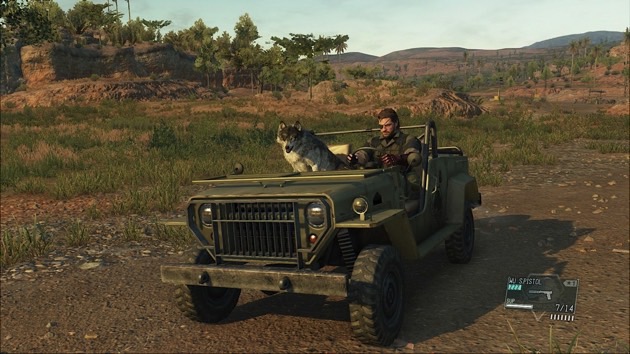
His powerful persona returns after the intro (and after some time has passed) as Metal Gear Solid V: The Phantom Pain leads players to an open-world region of Afghanistan. Imagine a series of large installations, like the one found in Ground Zeroes, surrounded by desert and you’ll have an idea of how the map in The Phantom Pain works. It’s a massive play area, engulfed in sand, riddled with wildlife and terrorized by the Soviet army.
Big Boss — back to form and outfitted with an intricate mechanical arm that can be used as a weapon — quickly establishes himself, alongside familiar franchise characters Revolver Ocelot and Kazuhira Miller, as the leader of a new private military corporation known as the Diamond Dogs. A gun-for-hire in the region, Big Boss helps locals fend off the 1980s-era Soviet invasion of Afghanistan by eliminating their commanding officers, destroying their equipment and generally sowing dissent through the desert.
The structure of missions in The Phantom Pain is similar to previous games in the series, specifically Peace Walker and Ground Zeroes. Players are given a slew of missions, some listed as primary story objectives and others as optional Side Ops. Completing Side Ops can be critical if your aim is to make Big Boss’ life slightly easier. When he arrives in Afghanistan and holds Soviet soldiers hostage, for example, Boss quickly realizes he doesn’t speak the language and can’t extract any useful information from the enemies. In an early Side Ops mission, however, Big Boss can capture and recruit a translator, allowing the protagonist to interrogate adversaries for details on enemy positions, special items and more.
The missions enables players to figure out the strategy that works for them and run with it. This is a reinvented, systemic Metal Gear Solid with an almost Far Cry-like open world structure, elevated significantly by the choices and subsequent one-off moments you’d encounter in a Hitman or Deus Ex. Crucially, too, The Phantom Pain retains the oddness, detail and some of the character of the MGS series.
When you select a mission, choose your gear and pick your buddy (more on this later), Big Boss decides at what time of day he wants to execute his plan. Infiltrating enemy strongholds at night has its obvious advantages: Darkness means low visibility and fewer guards roaming with a shorter range of view. But your visibility is also at a disadvantage. More than a handful of Soviet soldiers sitting in shadow surprised me as I made my approach, forcing me to drain the batteries of my night vision goggles. Nighttime also means more soldiers resting for the evening indoors, making things complicated when approaching villages with dozens of structures.
A few of stealth playthroughs that suddenly went wrong might became favourite moments in MGSV. I forfeited a perfect kill-free stealth run of one mission because I couldn’t get a good enough sniper angle on my target before he took off in a chopper. Sprinting up flights of stairs to the helipad, my victim spotted me just in time for me to throw every grenade in my inventory under the chopper, destroying it, vanquishing him and knocking me over, before I made a ludicrously frantic escape on horseback. It was amazing, and I’m not sure it would’ve been vastly improved had I silently shot the guy and snuck out.
Daylight sneaking offers better visibility — for you and the Soviets. It’s easier to tag and track the movement of enemies from a distance with your advanced binoculars as they roam the desert landscape. But the blinding sunlight can put Big Boss in peril as he waits for his eyes to adjust to the light when transitioning from indoor structures to the desert exterior.

The punishment for a stealth mission going wrong is an exhilarating set piece in a constantly surprising open world. I’ve had weird and wild battles of unending nightmare gunfights across giant bases, battling reams of soldiers, mechs and even a chopper as an ill-equipped one-man-and-a-dog army. Nighttime battlefields fill with smoke, flares and explosions. I’ve had to hide from swarming troops and mortar fire behind buildings, patting my dog for reassurance while I call in more ammo drops, preparing for my second wind as the night turns into morning.
Some hardcore players will never want to find themselves in that position: Metal Gear has always been a stealth-focused series, after all. But when the controls are this good, when your tactical options are so extensive, it’s in no way a bad thing to be part of these escalating, huge-scale battles, which offer the sort of moment-to-moment thrills most action games would struggle to script. Embrace it when things go wrong in MGSV. Nothing boring ever happens when it does.
The goal that guides every level (and every Metal Gear) is to sneak through environments without being caught by the enemy—if they spot Snake (or Big Boss), an alert phase ensues until you can lose his attackers. The Phantom Pain’s story missions take Snake to one of two enormous military sandboxes: the cliffs and plains of a Soviet-populated Afghanistan, and later, the swampy Angola-Zaire border. Out in these environments, MGSV throws together smart AI, uncontrollable weather situations and varied types of locations in ways that frequently generate new stories. The mission objectives tend to be a bit basic on the surface—extract this guy, assassinate this informant, stop this convoy—but what happens along the way is often unexpected and almost always exciting.
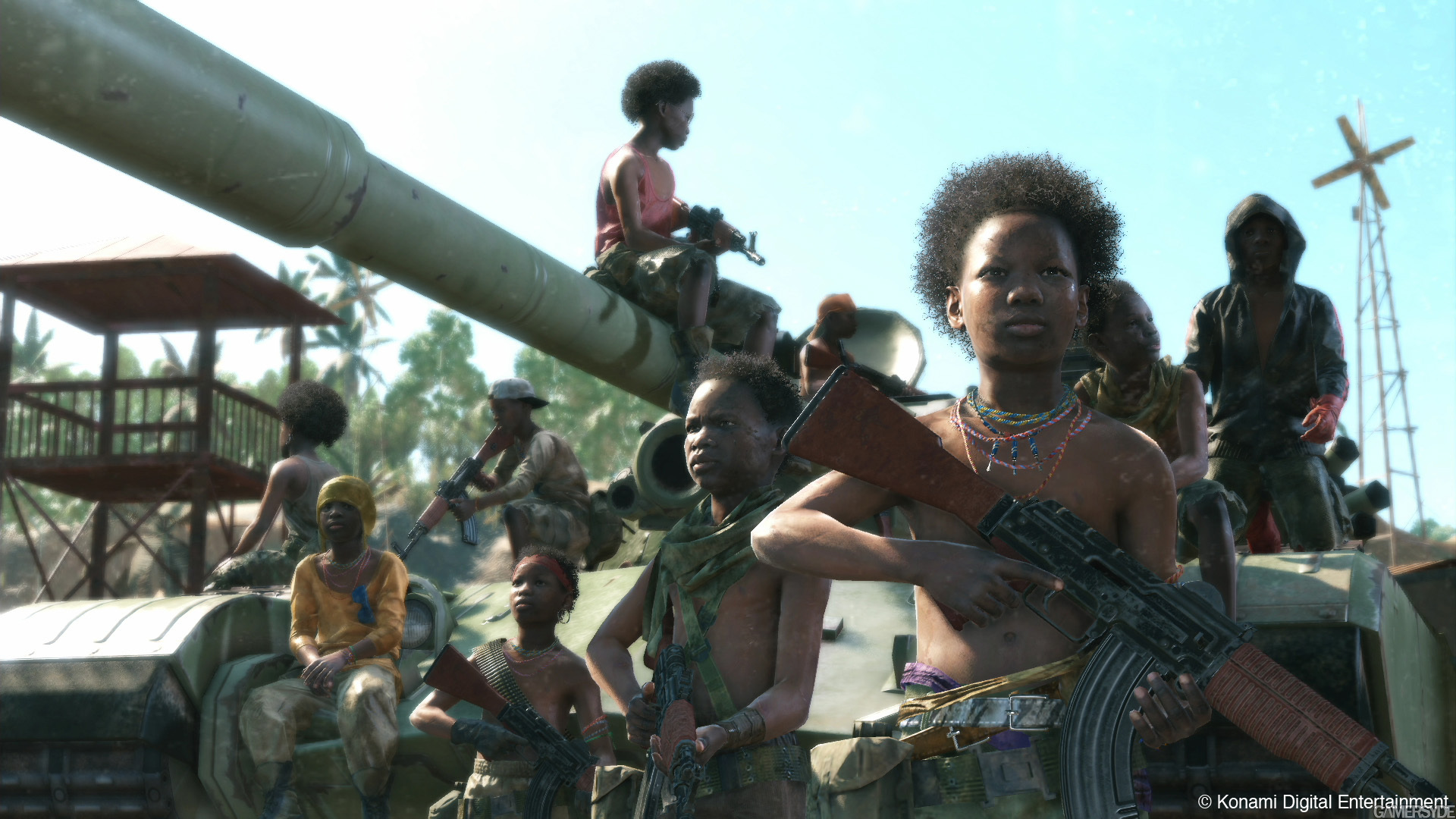
Heading into a mission, you pick Snake a limited loadout of two primary weapons, one sidearm, and explosives. Importantly though, you can also have anything from your armoury sent to the battlefield at any time via Snake’s iDroid device. Crossing the ten-hour mark, this range of instantly accessible options expands into AI companions of varying skillsets, airstrikes that let Snake summon fire from the skies, helicopters that can provide supporting fire and lots more. As someone who’s enjoyed the entire series, I see this as a natural progression from Metal Gear’s mini stealth sandboxes into something that realises the potential that was there all along, without any compromises.
As a result, the balance between game and story has now shifted significantly in favour of the former. It’s so different to previous numbered Metal Gears in its lack of cutscenes that it takes some getting used to. The narrative that’s here, too, is pretty sobre and convincingly serious for a series known for elderly snipers, vampires and men who can fire killer bees. In The Phantom Pain, it’s 1984 and Snake is attempting to rebuild his military offshore haven Mother Base following its destruction at the end of Ground Zeroes (I strongly suggest you play that before this). Having been in a coma for nine years, he’s seeking revenge on those responsible. After a deliberately confusing, scripted intro set in a Cyprus hospital, in which Snake escapes a horrific military attack, story is limited to a few brief cutscenes and a lot of optional audio tapes, the latter of which I only found intermittently interesting and easy to ignore.
The lack of an intrusive story and focus on unscripted sandbox action makes The Phantom Pain feel very contemporary and easy to recommend to new players. That modern approach extends to basic things that MGS has always struggled with, too, like the way Snake moves and controls.
The Phantom Pain shares Ground Zeroes’ intuitive third-person control scheme, which means it’s as much fun to play MGSV like a shooter as a stealth game. It’s important that they got this right, because there’s a lot to consider at once here: marking enemies in nearby settlements using the binoculars, switching to first-person aim with a gun and sneaking up behind soldiers to interrogate them all feel really easy to pull off. While you can remap the keyboard controls, I recommend using a controller for MGSV because the menus were clearly built with that in mind—there doesn’t seem to be a way to navigate the pause screen or iDroid using a cursor, meaning you’re stuck using the keys, which is a bit of a disappointment.
The Phantom Pain is a long game that takes upwards of 50 hours to see everything.In the field, visibility is affected by the day-and-night cycle, and when you’re deep into an enemy base and the sun comes up, it can be the difference between a perfect stealth playthrough or the final set-piece from an ‘80s action movie.The list of stuff to do in The Phantom Pain is divided into main story missions and Side Ops, and while the latter is mostly composed of optional missions, there are some key shards of story within them, too. It’s almost like an RPG quest structure, with both strands earning you GMP, MGSV’s currency.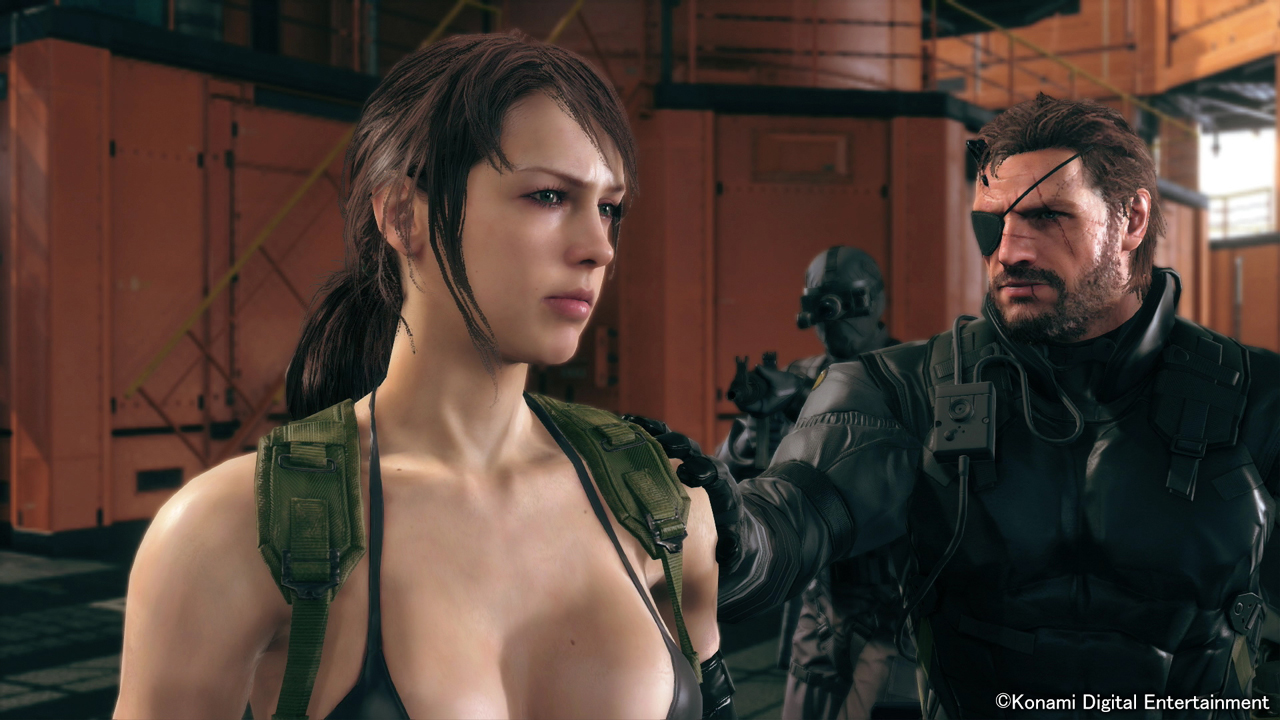
There’s another side to this, too. In the field, you can kidnap stunned or sleeping (not dead) soldiers using the Fulton Recovery System, which attaches tiny balloons to them and transports them back to Mother Base to join your army. You can then assign them to the various divisions on your base: R&D, where your guys are building new weapons, intel that grants you information on the battlefield, and several others, depending on what their skills suggest they’re best suited to (though the game can automate this if you’d prefer). The Fulton system can also airlift animals from the field, leading to funny images of goats looking confused while hanging in mid-air, and later vehicles and shipping containers.
Rebuilding Mother Base is the foundation of the story, but it’s also the metagame that ties everything together. This is where you’ll spend GMP and use resources found and collected all over the open world, such as fuel or plants. It’s both an offshore platform that’s Snake’s home between missions and a slightly dull management sim that takes place in menus on the iDroid, but the rewards definitely make the effort worth it.
You can explore your Mother Base on foot, too. What starts as a single floating platform becomes an elaborate network of them that perform different functions. It’s not a particularly fun space to be in, honestly, reminding me of MGS2’s dry mouth-inducing Big Shell (likely a deliberate callback by the artists) or a school trip to Southampton harbour, though it is cool that the soldiers there salute Snake and are happy to be beaten up by him at any time. I once knocked a guy out because he got slightly sassy for me not collecting enough plants from the battlefield. Snake can also shower off any blood stains here.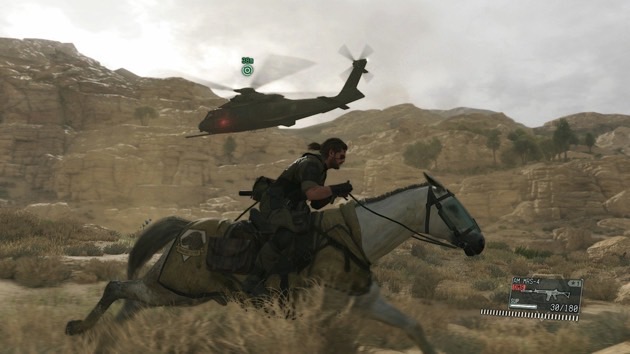
What makes Mother Base worth the time is that levelling up your divisions is the key to unlocking new weapons, equipment or any other sort of upgrades. Each weapon type has a tech tree: a tranquiliser dart gun can become a more powerful one with a better clip and damage, and so on. New weapon blueprints are found all over the two environments, and the thrill of researching a new grenade launcher and having it instantly dropped into the battlefield is a similar joy you’d get from an RPG crafting system.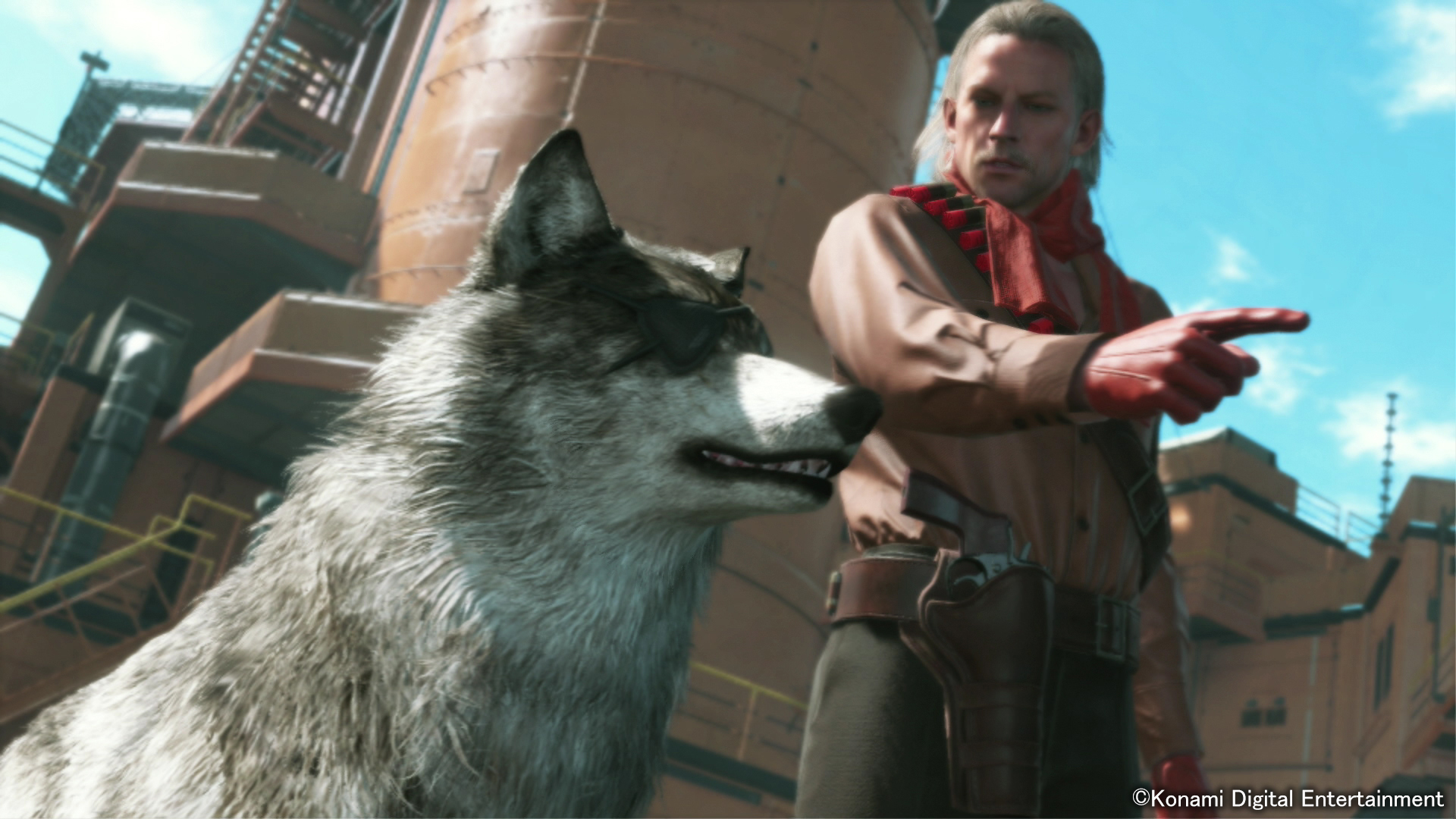
Some of the upgrades are frivolous but awesome: you don’t need speakers on your helicopter to play music when it arrives to pick up you up or unload rockets at the enemy, but why not go full Kilgore and have it play Ride of the Valkyries to scare the shit out of the Russians? Music pops up all over the world on collectable tapes, such as A-ha’s Take On Me or Kids In America by Kim Wilde, and you can both listen to them on Snake’s Walkman and have them blare out of your helicopter’s speakers. Custom music works, too. Might I suggest The Man Comes Around by Johnny Cash?
Upgrades also play a key role with Snake’s four AI ‘buddy’ support units in the game. There’s his horse, but also a dog that can add enemy locations to your HUD and attack them. There’s a mech, too, which can offer additional firepower and speed, and a sniper, Quiet, an invaluable AI companion only let down by her disappointingly porny character design. Like your weapons, you can call in a new buddy and swap out the old one at any time with the iDroid, another refreshing layer of flexibility, and they each progress in interesting ways. They’re all controlled using the left bumper on a controller. You can order Quiet to provide covering fire, tell your dog to attack enemies or order your horse to do a shit.
You can use all of these options or none of them—that’s the point. Don’t worry if this array of stuff to do sounds overwhelming: Kojima Productions sensibly drip feeds these elements into the game across the first ten hours so you know how to use it all. I found the journey to figuring out my optimal loadouts to be tremendous fun. Missions can be replayed at any time, so it can be worth going back just to see how an assassination might pan out with a silenced sniper rifle instead of a shotgun.
REQUIREMENTS:
MINIMUM



- developer:Kojima Productions
- publisher:KONAMI
- date of release:01.september 2015


Soma Akter liked this on Facebook.
Sonam Naveed liked this on Facebook.
Partho Mondol liked this on Facebook.
Brenda Vaccaro liked this on Facebook.
Aroloye Paul Seyi liked this on Facebook.
Sehar Dia liked this on Facebook.
Forid Islam liked this on Facebook.
Diego Medina II liked this on Facebook.
Yassin Iln liked this on Facebook.
Mark Aaron liked this on Facebook.
Mousumi Mondal liked this on Facebook.